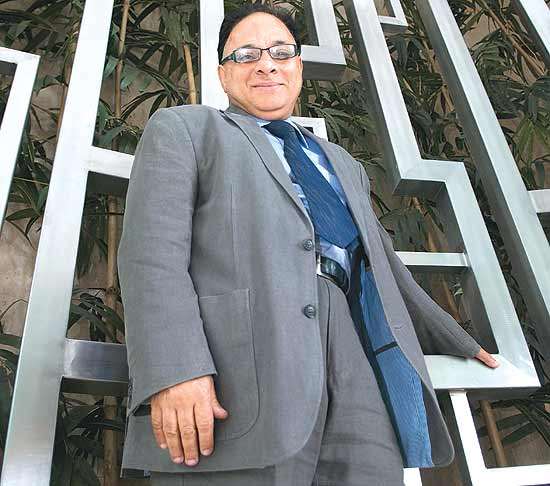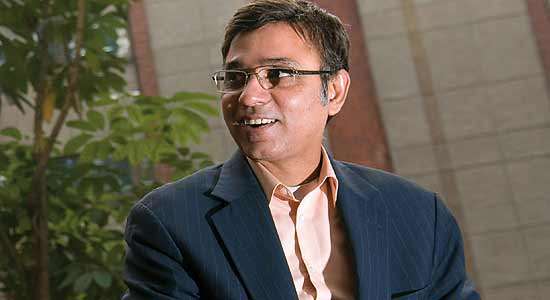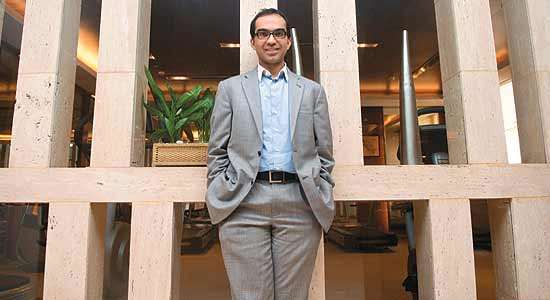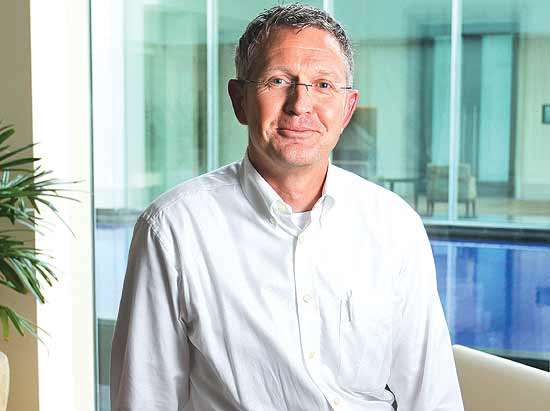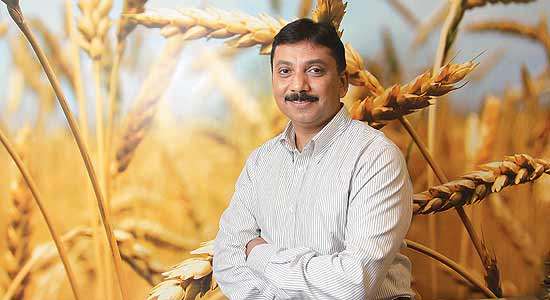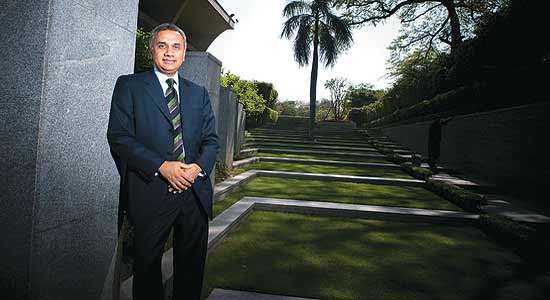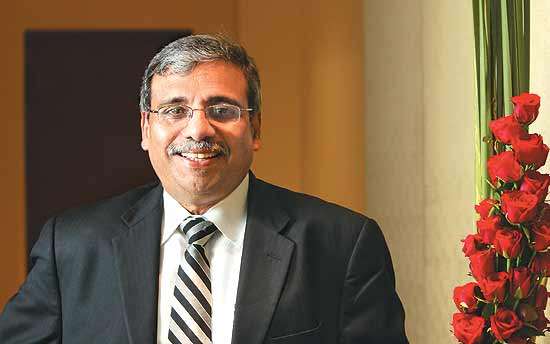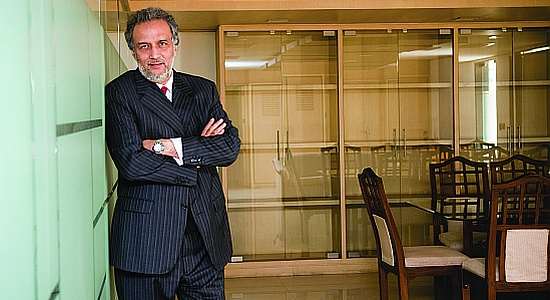In a freewheeling interview with Dr Amit Kapoor, Honorary Chairman at the Institute for Competitiveness, Vinod Sawhny, Executive Director and CEO, Beetel Teletech, speaks on a range of issues, from competitiveness in technology devices to the aspiring Indian customer.
Give us an overview of your industry.
The industry we operate in is the industry of technological devices. Beetel has its lineage in landline phones. There are broadly four main areas in this sector. First, the technology space, which consists of communications devices like mobile and smart phones along with tablets. Second, the IT domain, comprising IT peripherals, memory devices and 3G and 4G technology. Third, the enterprise area with enterprise solutions in the form of audio and video conferencing, equipment for call centres and data solutions. And last, we provide high-speed modems for telecom infrastructure.
Tell us about your consumers and your products—smart phones and tablets.
The consumer base in telephony is in two areas. One is the mobile handset and the other is how these mobile telephones are going to translate into smart devices. Around 150 million handsets are sold in India every year, making it the largest growing handset market. And as India expands into rural areas, the demand for cost-effective and user-friendly mobiles is soaring.
This is the segment where Beetel has an array of mobile handsets in the range of Rs 1,500-6,000. These are feature-rich products with social networking features, high-battery life, camera, FM and dual SIMs. We will be launching higher-end products with larger screen sizes operating on Android technology soon. We also have plans to launch a tablet that will have features for the Indian consumer. Our products will have applications for the Indian customer, unlike the ones offered by global brands.
We are not exactly manufacturers because in India the transition is so rapid that a new model expires within a month.
But other brands, like Micromax, follow the same strategy. How will you differentiate your offerings?
There are two facts that set Beetel apart. First, it has a large corporation like Bharti supporting it. Second, Beetel as a brand has been in the telephony space for the past 25 years. People trust the brand. And our value proposition will be better than the others. We will offer ‘n+1’ at the same price where others offer just ‘n’.
In addition to this, we are working with chip manufacturers and design houses from around the world to make our products globally competitive. This keeps costs in control. The principle is to re-create ourselves every now and then. I joined this organisation 13 months ago. It is a very different organisation now. Today we are hugely customer-centric; we want to be the first ones to provide the customers with the features and devices they aspire to have!
Can it be said that you operate in a price-sensitive market rather than a high-end market where brands like Blackberry work?
Beetel is actually a distribution company and distributes not just global brands like Apple and Blackberry but also Beetel-branded phones in the market. So, we are a distribution house, which distributes the technology of global majors as well as Beetel handsets. But, the important point here is that the global brands we sell follow a different distribution channel. There is a distinct channel, price-point and customer for these products and thus there is no conflict with our products. The basic idea is to expand the market.
What is the difference between international and Indian consumers?
Indians are very prudent as far as communications expenses are concerned. Dual-SIM phones are more prevalent in this country than anywhere else in the globe because people often use one SIM for their professional and the other for their personal calls. These days consumers opt for multiple SIMs to enjoy the benefits of different call plans. People, even in the rural areas, want mobile phones that give them access to the Net. But Indian consumers still need to evolve as compared to the international consumers who already have everything on a platter.
How do you think the market is going to evolve?
People are always going to upgrade, so they will want more features at lower prices. The product with most features at the lowest possible price will be the winner. That is the direction in which markets are going. Also, the tussle between feature-rich phones and smart phones will bring down the prices of smart phones. Finally, evolution will lead to the adoption of social networking features by people and use of the mobile phone as a payment device.
This also means that there has to be a very smart telecom service provider. How do you think the telecom industry will pan out?
All telecom service providers today realise that voice revenues are drying up as a result of the extremely low margins in voice telephony in India. To make the business profitable, they will have to enter the data sector. Utilisation of all applications is the way in which non-voice revenues are going to be built. So, I see a huge coming together of device manufacturers and applications. These will be sold by the telecom service providers so that more revenue can be brought in through apps.
To remain relevant you have to come up with products and services that are better than anybody else.
We are not exactly manufacturers because in India there are no economies of scale and the transition in the industry is so rapid that a new model expires within a month. The ideal way is to get products manufactured to your specifications, designs and features in the most cost-effective manner.
We have hundreds of centres in China. Then, we bring in consumer insight and take the advantages of scale that these production houses in China bring.
What are the unique activities in your distribution system?
The good thing about Beetel is that we are working across two to three distinct product lines. We are into mobile phone distribution, which spans the entire nation and goes right down to tier II and tier III towns. We are also into IT distribution, which again enables us to reach smaller towns. We have a smart phone distribution system for Apple that assists in distributing the company’s phone in the top 25-30 cities.
We are moving heavily into the large format retail space as well. And because we are in so many product spaces it helps us to decide the best distribution model to follow and which distributor to pick. There are huge overlaps and we examine these overlaps from time to time, to see what makes sense for every product category we get into.
Above all, our fair and ethical business practices help us in the market. Bharti’s growth comes from the fact that it is an entrepreneurial organisation. And, we are bringing in exactly the same credo in Beetel, of being serially entrepreneurial in everything that we do.
What is the difference between the rural and urban markets?
The rural markets are totally untapped. The reason why no one has been able to tap the rural markets effectively is the high cost of the last mile. But now with networks, it is changing. The rural market is the place where first time purchases of handsets are happening unlike the urban market where the people are constantly upgrading handsets. The aspirations of the rural customers are not rural but are similar to that of an urban customer. There is a demand for an affordable but feature-rich product.
Have there been tradeoffs? Are there things you have decided not to do?
We will deliver products that will live up to the expectations that the consumer has from a Bharti Group company. No doubt, there have been tradeoffs. But, we have ensured that we remain within the connectivity space because Airtel is a telecom service provider and we belong to that group. For instance, we are in the mobile and smart phone space. We are into 2G and 3G data cards, too. We will get into anything that enables connectivity. We also have a huge focus on quality. For example, we launched mobile phones in September last year. Our approach has been very clear—to ensure that our products stand the test of time and be rated best in quality.
How has competition made you change in the last 12 months or since inception?
Hugely. We have diversified out of the landline phone category. The fact is, in order to remain alive and relevant, especially in the technology space, you have to come up with products and services faster and better than anybody else. That has been a defining principle. For example, we have changed the name of our smart phones division to smart devices division. Anything that is a smart device, will fall in that category. Smart devices can today have endless applications. The question we keep asking ourselves is: Can devices be linked to healthcare , security and surveillance?
You have been like a serial CEO. Do you think the challenges in an organisation have changed over time?
I started as part of the Godrej GE setup and we became leaders of white goods in India. Then I went to a decade-long stint in telecom at Bharti Airtel, including a couple of years in retail. Now, I
am working in a technology sales and distribution organisation.
I think all my assignments have either been start-ups or turnarounds. There has never been a dull moment. Whether you do start-ups or you do turnarounds, there are unexpected challenges. When you face the challenges head-on and still come out ahead, it gives you a sense of satisfaction and a strong belief in yourself.
What is your mantra for success?
I believe that leadership evolves everyday. So, you have got to own it, articulate it, live it passionately and inspire your team to work along with you.
What is your idea of leadership?
My idea of leadership is very simple. It’s to lead a team to fulfil a vision. Lead people, by example, to deliver results.
What would you want to be known for in the next 10 years? You have success stories in the past from Spice to Bharti.
I have done a lot of new things in my 27 years of professional life. I have worked with three top organisations and across a huge number of their businesses. The good part is I have been able to create a vision and have been able to deliver the vision for every business I have joined. In the next 10 years I’d like to be known as a person who can create a vision and deliver results.
How would you define strategy?
Strategy is about enabling a vision. You need special lenses to see the opportunity and strong conceptualising skills to chart the course.
What has been the biggest challenge you have ever faced and how did you resolve it?
I could talk about a couple of challenges. When I was with Godrej, I was sent to north India to chaperone our business through a period of high militancy. I worked with the team during the crisis and led by example to make it one of the largest business units within Godrej, in terms of turnover.
The story of Bharti Airtel’s dominance in the north continues to be a huge success story. Even today it is a dominant player in the north, especially Punjab. Bharti entered Punjab at a time when the top brand there was leading by a huge margin. Within 15 months, Airtel became the leaderin telecom in Punjab.
If you do well, the bar keeps going up. For me, this has always been the case. These were some of the biggest challenges of my life.
4 CS Model
Context
- Early expiration of new technology.
- l Similar strategies of competing firms.
- l An ever-emerging and yearning Indian customer.
Customer
- Urban and rural.
- Elite (demanding high-end products and services) along with tier II and III city consumers.
- Demanding feature-rich products at affordable prices.
Competition
- Global and Indian players. Competition lies in being the first one to provide the latest product to the customer.
Company
- Huge diversification. Presence in two to three product lines, initiating cost-control measures by designing its own products.
- Indian customer-centric, striving to provide the best services at minimal price and building on customers’ trust.
- Following a different distribution system for global products.
Source: Interviewer’s analysis
Evolution Of The Industry
Wave 1
- Swept the nation with the induction of landline phones.
Wave 2
- Transition from landline to mobile phones and entrance of global players in the Indian market.
Wave 3
- Smart phones,tablets,3G and 4G services, a consequence of advanced technology and soaring aspirations of the Indian customer.
The Strat Speak interaction was published with Outlook Business on April 30, 2011.

